Wayback Wednesday: A Look At Jonestown
Published on November 18th, 2015 in: Culture Shock |“We didn’t commit suicide, we committed an act of revolutionary suicide protesting the conditions of an inhumane world.”
—The Reverend Jim Jones, founder of the The Peoples Temple Full Gospel Church“Revolutionary suicide does not mean that I and my comrades have a death wish; it means just the opposite. We have such a strong desire to live with hope and human dignity that existence without them is impossible. When reactionary forces crush us, we must move against these forces, even at the risk of death.”
—Huey P. Newton, co-founder of the Black Panther Party
On November 18, 1978, more than 900 people died in the largest mass suicide/mass murder in history (before September 11, 2001). The location of this grisly event was Jonestown, a religious commune in Guyana. Jonestown was inhabited by about a thousand followers of the Reverend Jim Jones, who had founded The Peoples Temple Full Gospel Church in the 1960s.
In the mid-1950s, Jim Jones had quit his job as Assistant Pastor at the Lauren Street Tabernacle in Indianapolis, Indiana because the church board refused to allow integration of African-Americans into the congregation. He started the Peoples Temple soon afterwards to deal with social issues like racism and class inequality, but it was also a way for Jones to communicate his Marxist beliefs.
The beginnings of the Peoples Temple were auspicious: Jones established nursing homes and developed projects in the inner city to help both poor and homeless people, in addition to donating money to humanitarian and political causes such as the anti-apartheid movement. In 1960, Jones was even appointed the Executive Director of the Human Rights Commission, but the constant harassment and death threats from racists caused so much mental and physical strain that he left the position the next year.
The Peoples Temple had a reputation for practicing what they preached: a “human rights ministry.” Yet soon, cracks in the beautiful façade of the Peoples Temple began to show. Eight former members of the church (referred to as “defectors”) told stories of surveillance, forced confessions of bad deeds, physical abuse, and blackmail.
By the time the 1970s rolled around, Jones’s Communist teachings became more obvious in his sermons and he renounced what he called the “Sky God” in favor of a new “apostolic socialism.” He argued that no benevolent God would allow his children to suffer and saw the Bible as a “text filled with lies.” He promoted the idea of the “Divinity of Socialism,” in which love was the “central ordering of society.”
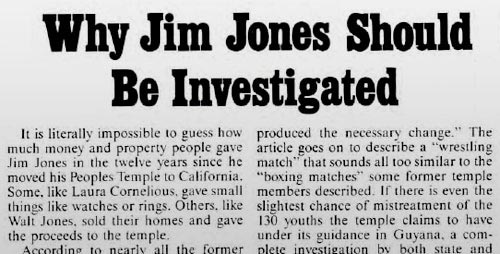
Article from the San Francisco Examiner
Eventually, Jones appointed himself as the manifestation of the God personification of Socialism, claimed to have supernatural powers similar to those of Jesus Christ, became increasingly obsessed with the Apocalypse and Judgement Day, and openly condemned capitalist governments. Soon, the rest of the world became less tolerant of the Reverend and the Peoples Temple, particularly the media.
After being excoriated in the media as a fraud with a messiah complex and denied tax-exempt status, Jones set up a new compound for the Peoples Temple in Guyana, and by the end of the 1970s, there were close to a thousand people living there. But the attempt to escape from their persecutors proved futile for soon the Peoples Temple was being pursued by the IRS, the Social Security Administration, and US Customs.
It wasn’t just the outsiders that seemed to have it in for Jones and his followers, it was also several former members, under the umbrella of a group called the Concerned Relatives, who painted the Peoples Temple as a cult who brainwashed and abused people. Around this time, Jones, whose role in the management of the Peoples Temple had diminished, began to become more and more paranoid and delusional as well as heavily addicted to drugs.
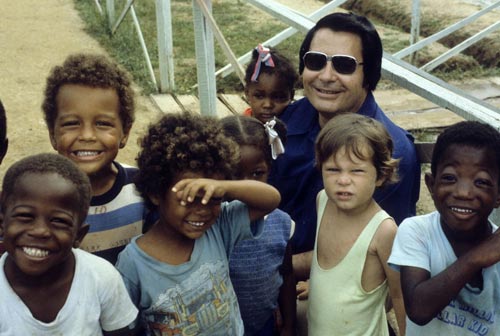
Jim Jones and kids from the Peoples Temple in happier times
In 1978, Congressman Leo Ryan became emotionally invested in the bitter, protracted custody case of John Victor Stoen, the child of two former members of the Peoples Temple. (To complicate things further, Jones claimed to be the biological father of the child.) Ryan received permission from the State Department in November of that year to visit Jonestown as part of his “official oversight plans for the year,” along with members of the media and the Concerned Relatives.
The visit was tense, but overall, Ryan felt that Jonestown was not holding people against their will and said he’d report as much when he went home. In fact, during the short visit (which lasted less than 48 hours), several people expressed their desire to leave the compound and return to the United States with Ryan and his entourage. One of these people was Larry Layton.
At the Port Kaituma airstrip, the members of the visiting party and the soon-to-be-former members of the Peoples Temple were boarding planes at the airstrip, when Layton took out a gun and started firing. At that same moment, a truck full of members of the Temple’s security force—The Red Brigade—pulled up and also opened fire. Congressman Ryan, a reporter named Don Harris, NBC cameraman Bob Brown, Examiner photographer Greg Robinson, and Temple member Patricia Parks were all killed, while ten others were wounded.
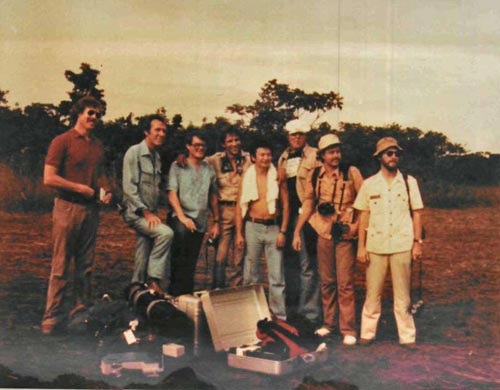
Photo of the visitors to Jonestown
at Port Kaituma on November 17, 1978 taken by Leo Ryan
That night, Jones responded by staging a mass suicide, only instead of the mass suicide practice drills he’d been ordering at random intervals throughout the previous months, this time the fruit punch was lethal: laced with cyanide and tranquilizers. According to his last recorded messages and the testimony of members of the Temple who escaped, Jones ordered the hit at the airstrip so he could carry out his plan of mass suicide. In an even more tragic twist, the children were ordered to drink the punch before their parents.
For some insight into Jim Jones and what went so wrong, check out this interview with Jim Rieterman, a journalist who was present during the events of November 1978.
A more detailed account of the events leading up to the founding of the Peoples Temple and the events at Jonestown—and my major source for this post—can be found in Dr. John Walliss’s article on the San Diego State University’s website, which has many resources for learning more about Jonestown.
This article was originally published on the Toronto International Film Festival Vanguard programme blog.
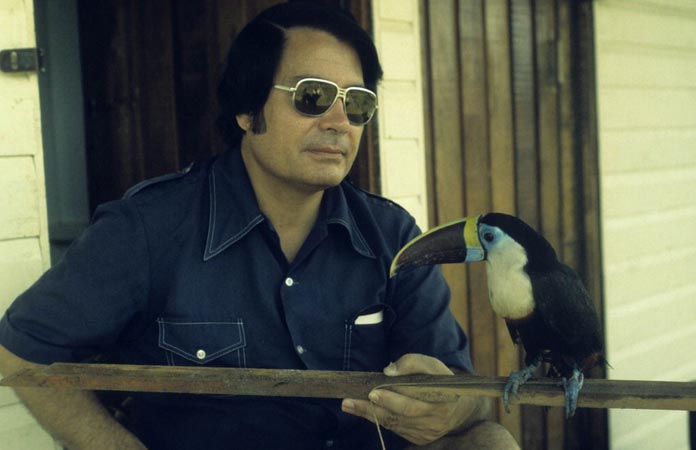
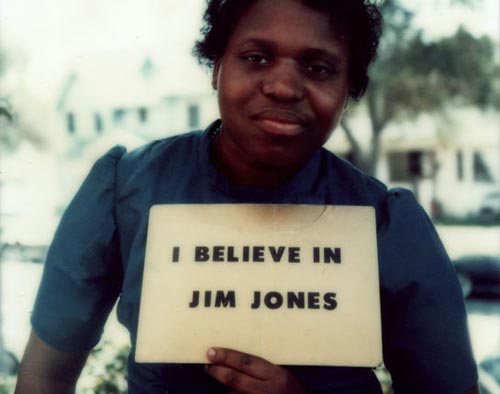
Time limit is exhausted. Please reload the CAPTCHA.